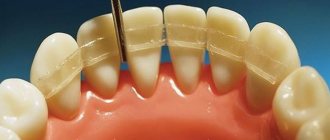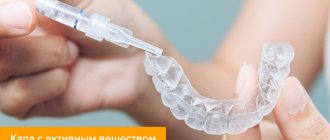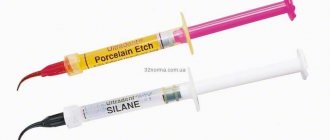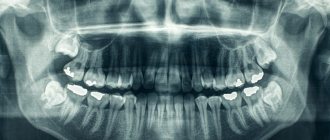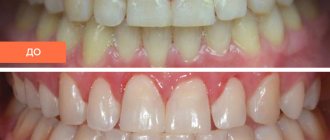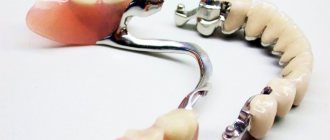Publication date: June 29, 2022.
Information on this page was updated on October 28, 2021.
Piezosurgery is a modern method of performing delicate and precise surgical operations using ultrasonic waves. A feature of this technology is atraumatic work with hard (bone) tissues and a complete absence of impact on soft ones. Due to ultrasound waves, soft tissues seem to “spring back” from the piezo-apparatus nozzle and are not damaged during the operation.
In addition to the absence of the risk of injury, working with modern tools is particularly delicate. Due to the miniature attachment of the piezo knife, the doctor has complete control over the surgical interventions. The incisions made are carried out delicately: ultrasonic waves cut through the bone tissue clearly at the selected point, leaving neat cuts and without injuring the soft tissue.
Advantages
Practicing dentists who use ultrasound in daily practice have identified a number of advantages of piezosurgery:
- Predicted result. Until the early 90s, many doctors refused to perform dental implantation, citing the risk of complications during surgical procedures. Previously, implantation was technically difficult. Doctors invented different ways of doing it to help patients, but not all of them worked. When ultrasound came into widespread use, things started to improve. Over two decades, specialists have accumulated enough knowledge and experience to ensure that today this procedure has a guaranteed result.
- Atraumatic. Although tooth extraction is one of the most basic surgical procedures performed by a dentist in the oral cavity, it can sometimes be difficult to perform. Especially when it comes to wisdom teeth. Often they lie deep in the bone tissue, and the doctor has to use not only forceps, but a drill to open access to the “hiding” wisdom tooth. The more complex the operation, the greater the chance of injury, and such situations happen even to the most experienced surgeons. But with the help of ultrasound, the risks of complications are minimized.
- Quiet postoperative period. If the operation is successful, this does not guarantee normal wound healing: swelling or bleeding may occur. During operations with a piezotome, there may be no bleeding at all. The piezone also provides temperature control through water cooling. Controlled irrigation avoids overheating of the bone tissue, which contributes to its faster recovery.
- Painless. When performing surgical manipulations in the oral cavity, pain from the surgeon’s actions is rarely felt. Most often, pressure applied by the doctor or stretching of soft tissues is felt. In the case of a piezotome, this will not happen, since the doctor has only one instrument in his hands. Local anesthesia will be sufficient to make the operation comfortable.
- High speed of operation. The procedure using this technology is reduced by a third. Due to the ease of use of the equipment, the stages of the procedure take less time.
- Aseptic processing. Since the device is not connected to the central water supply, but has a water tank, the dentist has the opportunity to fill in another liquid. The operation can be performed with a solution of chlorhexidine or miramistin.
- High precision of the operation. During manipulations using ultrasound, incisions are made without pressure or effort, only using back and forth movements. This incision is selective, thin and smooth, allowing the volume of bone tissue to be preserved.
- Operation in hard-to-reach places. This is especially important when removing wisdom teeth. The oral cavity is small, and the dentist does not have the opportunity to increase surgical access: no one cuts the cheeks to get to the tooth. The piezotome has a convenient shape so that the doctor can work in places where this would be difficult under normal conditions.
Ultrasonic surgical device – Piezotome
A specially designed high-precision ultrasound system is used to perform surgical operations. The innovative ultrasound device Piezotome is used for painless surgical operations and surgical manipulations.
Piezotomes are the most common class of ultrasonic scalpels.
The device consists of an oscillation generator with a settings unit and a scalpel itself with interchangeable attachments. The direct effect on solid biological tissue is due to high-frequency cavitation of the liquid supplied to the nozzle. The frequency range (10 - 29000 Hz) and amplitude (60-200 µm) of vibrations allow you to adjust the piezotome to treat bone structures of various densities.
Advantages of using a piezotome
Unlike mechanical preparation of dentin, fragments of jaw bones and other organs of the oral cavity using a drill machine, a piezotome is capable of:
- Perform more precise and finer cuts, sampling and sanding.
- Perform low-traumatic surgical procedures while preserving nerves, vessels and other soft tissues in the preparation area.
- Carry out processing in places inaccessible to the drill machine.
- Minimize the risks of complications and significantly reduce the recovery period after surgery due to low trauma, antibacterial effect and low level of pain for the patient.
Piezosurgery in dentistry. Where is piezotom used?
Modern dentists use an ultrasonic scalpel not only in surgery, but also in endodontic treatment that preserves a vital or pulpless tooth. But, nevertheless, the advantages of the piezotome are most fully revealed during the removal of impacted teeth and during osteoplasty prior to the installation of implants. To create access to the maxillary sinus during sinus lift operations, a piezotome is used, which reduces the trauma of the operation and reduces the risk of damage to the mucous membrane of the maxillary sinus at the stage of access formation.
Contraindications to piezosurgery
For a number of systemic diseases and conditions of the patient - diabetes mellitus, the presence of a pacemaker, reduced immunity - piezosurgical intervention is not performed. Specialized dental contraindications to the use of ultrasound may be associated with the risk of destruction of fillings. In each specific case, the doctor evaluates the filling material, its condition, proximity to the piezotome operating area and makes an individual decision.
Contraindications
There are no absolute contraindications for such procedures. It all depends on the person’s condition, so the doctor chooses the method of treatment during examination. Usually doctors offer several options for solving problems, and the patient chooses the one that is most convenient for him.
Temporary contraindications include acute inflammatory processes, colds, pregnancy and lactation. If a patient has chronic diseases of the cardiovascular, nervous or endocrine systems, the surgeon can refer him for consultation to an appropriate specialist.
The essence of the technique
It is important that when using ultrasound techniques, all details (nerves, blood vessels, gums) are not affected. The incision itself is neat, minimal, and with a high degree of accuracy. When ultrasound is used, the result is always as expected and the success rate is high. Manipulation makes it possible to carefully pinch off a piece of fabric and create a hole. The device affects soft bodies, as well as hard tissues, so the waves cut them. The action occurs at a distance, the device does not come into contact with them. Some features:
- Using the thinnest possible nozzle in a gentle mode results in minimal injury.
- Only a sterile solution is applied to the affected area.
- Disinfection, washing out the smallest pathological particles.
- The device is equipped with powerful backlighting, which has a positive effect on the final results.
- With the help of ultrasound, operations are performed in hard-to-reach areas, as it operates at a distance.
Today, osteoplasty is not performed in dentistry without this device. The main principle of operation is the vibration of a piezotome, that is, an ultrasonic tip. The technique was developed by Dr. Verzelotti to expand the indications for bone surgery. Microvibrations guarantee high precision. The thickness of the cut is determined only by the thickness of the nozzle. The frequencies always ensure that only mineralized tissue is cut. It is safe for bones as well as anatomical structures. With the classic use of rotating instruments, such as dental drills, the surrounding soft tissues are injured. The new scalpel ensures a painless operation process. Therefore, today dentists are increasingly offering patients operations using a new technique.
Any surgical intervention should leave a blood clot in the wound. This is a standard reaction of the body. In addition, it is a natural protection for the wound area. But when a drill is used, friction occurs, causing the bone to heat up. This complicates the formation of a protective clot. The new method does not have such a negative effect. The wound is always in good condition.
Stages of the operation
Most often, piezosurgery is used when it is necessary to extract a wisdom tooth. How the procedure will go:
- Anesthesia. To prevent pain during the procedure, the dentist makes injections into the soft tissue near the disturbing tooth. The doctor calculates the dose of anesthetic based on the patient’s health, the time for the operation and its volume. After 10-15 minutes, sensitivity disappears. This is the most important stage, since allergies to the anesthetic are possible.
- Gum section. In case of complex extraction, the tooth is located under the gum and bone tissue. To get to it, surgeons create access layer by layer. The gum incision is made using ultrasound. After the incision is made, the gum is moved slightly to the sides so as not to interfere.
- Opening the bone. Since the tooth lies in a follicle inside the jaw, the surgeon makes a hole in the bone, after which the tooth becomes visible to the naked eye.
- Removal of a tooth. Often the reason for getting rid of the “eights” is their incorrect location, when it not only cannot cut through, but also puts pressure on the neighbor. It is difficult to obtain such a tooth, so the surgeon saws it into several parts. The eighth teeth are the furthest in the oral cavity, so it is impossible to extract the entire tooth: the necessary tool cannot reach that far. This stage is the most difficult.
- Stitching the wound. After removal, a large hole remains. The doctor places a bandage on the bottom of the hole, which will stop the bleeding and disinfect the wound. There are simple iodoform turundas or modern self-absorbing sponges. After this, the doctor brings the edges of the hole together and applies sutures. They can resolve on their own, or they can be removed by a doctor.
Piezosurgery at the ALTEYDENT clinic
Dental surgeons at our clinic successfully use piezotome in the treatment of maxillofacial pathologies, tooth extraction (especially in complex cases), as well as in a number of osteoplastic manipulations.
Types of operations using an ultrasound machine
The main areas of piezosurgical practice at the ALTEYDENT clinic are related to:
- Removal of impacted and dystopic teeth.
- Splitting of the alveolar ridge.
- Collection of autogenous material for sinus lifting.
- Creating access for sinus lift surgery.
Removal of unerupted (impacted) and/or displaced (dystopic) chewing teeth may be advisable for both therapeutic and aesthetic purposes. This is especially true in connection with pathologies of the third molars (wisdom teeth). They can put pressure on the dentition as a whole, causing the displacement of several teeth and the destruction of second molars. Ultrasound surgery significantly speeds up the healing of the extraction site.
In some cases, when preparing for implantation, the bone thickness turns out to be insufficient for implantation. A typical situation is bone resorption in the distal parts of the upper jaw, where the maxillary sinuses are located. The sinus lift operation raises this floor due to the engraftment of a layer of osteomaterial. The best option for osteoplasty is the transplantation of fragments of the patient’s own (autogenic) tissues, as this ensures their rapid survival and the absence of rejection reactions.
Clefting of the alveolar ridge is also associated with preparation for implantation. With this operation, it is possible to increase bone thickness from 2 to 9 mm.
Cost of treatment
Solving the problem of a dystopic/impacted tooth using piezosurgery in our clinic will cost the patient 5,000 rubles . regardless of the characteristics of the pathology. A full range of manipulations for closed sinus lifting or osteoplasty with expansion of the alveolar ridge costs from 5,000 to 7,000 rubles .
Recommendations
After the procedure, the dentist gives recommendations. Immediately after removal, the patient is given cold to the cheek: this will prevent swelling. When the effect of anesthesia wears off, the patient may experience pain for some time - this is normal. In this case, you can take the painkiller that the doctor suggested.
For 3-5 days, it is recommended to eat food at a neutral temperature, without heat or spices. Usually on the third day the patient is invited for a follow-up examination.
Saliva makes wounds in the mouth heal much faster. Only the first day will be the least accepted. If you follow the dentist's recommendations, the postoperative period will pass quickly and calmly.
- Recommendations after surgery .pdf
- Postoperative recommendations .pdf
Cost of tooth extraction using ultrasound
Compared to traditional tooth extraction, the price, of course, is almost twice as high, but the quality of the ultrasound removal procedure is significantly different.
The main danger of using the traditional method of tooth extraction is the use of a drill, which, upon contact with tooth tissue, can cause injury, accompanied by bleeding. In addition, overheating of the tooth from the impact of the drill threatens the development of pulpitis (inflammatory processes in the pulp of the tooth). In turn, tooth extraction using ultrasound is carried out non-contactly, that is, the risk of bleeding and possible complications is minimal.
Treatment of chronic periodontitis of the tooth that supports the bridge
| Before treatment. Symptom: “tooth aches under the crown”, pain when biting. Non-X-ray image shows an enlarged periodontal gap in the area of abutment tooth 34. | Treatment has been carried out. The tooth canal is sealed through the crown with a slight removal of the therapeutic filling material beyond the apex. |
| Long-term results after 6 months. X-ray examination showed that the periodontal gap was reduced and the inflammatory process was stopped. Subjectively, the pain decreased significantly to the level of mild anxiety. The teeth are preserved. There was no need to redo the bridge. |
Laser surgery
Laser devices for working with soft and hard tissues, imported and domestic, are widely used in modern surgical practice.
Areas of application of lasers in dentistry:
- removal of benign tumors in the oral cavity (fibroma, epulis, ranula, hemangioma, candyloma, etc.)
- removal of retention cyst
- plastic surgery of the oral vestibule
- excision of the frenulum of the tongue and lips
- treatment of hypertrophic gingivitis
- treatment of pericoronitis
- treatment of oral leukoplakia
Laser device for surgical dentistry (diode laser scalpel)
Diode laser "IRE-Polyus" 1.56 microns
Working part of a surgical laser device
Periodontal surgery
One of the current areas of work in the surgical department of our clinic is periodontal surgery. Our dental surgeons perform operations such as:
- Vestibuloplasty
- Plastic surgery of the frenulum of the upper or lower lip
- Plastic frenulum of the tongue
- Elimination of gum recession
- Gingivectomy
- Removal of benign tumors
How to behave after piezosurgery?
Immediately after surgery, it is better to follow these recommendations:
- Do not eat until the anesthesia wears off
. Otherwise, there is a high probability of damaging soft tissues. Also, it is better not to eat for 1 - 2 hours so that leftover food does not fall into the fresh hole; - Adjust your diet
. Immediately after surgery, it is better for the patient not to eat solid foods and limit the consumption of salted, peppered, and pickled foods. The first days it is better to give preference to pureed food, as well as natural juices, soft foods, and focus on drinking; - Do not touch the hole
. For the first few days, a blood clot will remain in the area of the tooth socket. It is not recommended to touch it or the operation site itself, so as not to disrupt the regeneration processes. Rinsing the mouth with aggressive liquids and compresses are also undesirable. When brushing your teeth, it is better not to brush a fresh socket. - Do not expose the body to temperature changes
. Visits to the sauna, bathhouse, and solarium are not recommended for patients. Increased blood circulation may lead to bleeding in the area of intervention.
Types of rubber dam.
Classic rubber dam.
This is a latex napkin, which in turn varies in density and thickness. Depending on the purpose, a certain type is used. There are also differences in colors that determine the scope of application. The colors are: light beige, blue, pink, green, gray, blue.
Liquid rubber dam.
Made on a gel basis, when used it tends to be distributed evenly and is fixed when exposed to special light. This type of rubber dam is used for teeth whitening, sometimes in combination with endodontics (canal treatment).
Free consultation
Startsmile experts are leading dentists in Moscow. Doctors at our aesthetic dentistry center SDent are among the leading specialists in the field of dentistry throughout Moscow.
More details
SDent in the TOP 10 best dental clinics in Moscow A place of honor in the ranking of private dental clinics in Moscow in 2022 by the expert magazine about dentistry Startsmile with the support of Kommersant Publishing House
More details
AT THE GERMAN AESTHETIC DENTISTRY CENTER ES-DENT, specialists provide a guarantee for dental treatment and are responsible for the long-term quality result, ensuring the most comfortable condition of the patient during the treatment procedures. That is why the use of a rubber dam has positive aspects for both the patient and the doctor.
